How to measure customer retention and do something about it
Find out how to measure customer retention so that it leads to action. Every SaaS needs to decrease churn rates and improve user retention for growth.

Anybody who’s done a home project knows the importance of custom measurements. Say it’s for blinds. You get started, taking out the measuring tape, measuring your window opening, and recording your measurements. Then you head off to the store, feeling confident.
But when you get home with your new blinds, your heart sinks as you prepare to install them. It turns out your measurements were off by a couple of inches.
Now you have to spend time returning your blinds and trying to fix your simple but significant mistake.
When you measure your SaaS company’s customer retention rate, you risk getting it wrong.
Companies measure retention as one big number to develop a vague action plan. They may also adopt a rigid, intrusive strategy to increase retention.
Brands that want to measure customer retention aren’t doing it for fun. They want results. It’s about improving user retention to sustain and increase monthly recurring revenue.
To improve customer retention, you need to find the right tool to measure all customer interactions and insights. Then, your customer retention tool should equip you to deploy the necessary actions to get actual results.
Here’s the key: improving customer retention through a personalized, user-first strategy instead of creating an experience about what you want.
So, let’s stop talking about customer retention and do something about it (the right way).

What’s a reasonable customer retention rate for your industry?
What is customer retention?
It’s simple: it’s the ability to keep your customers for the next billing cycle or within a measured period. But what is a good rate? There are many answers.
A social platform like Facebook will have different retention standards than a B2B SaaS platform servicing enterprise clients.
In the first example, if 20 users leave the platform, it goes unnoticed. But if the SaaS platform servicing enterprise clients loses 20 users in a short span, it could be a huge hit.
The point? Every industry will have different standards and expectations for customer retention.
The best way to measure customer retention against standards is to analyze your industry and similar companies. If you can access industry white papers and statistics or communicate with others, you can get a sense of what a good customer retention rate is.
Even with industry information, it’s a good idea to look at your internal retention health first. The fastest way to authentically improve retention is by starting from where you are now.
Analyze your current customer retention rate and establish a realistic goal for improvement. Through incremental advances, you can achieve an improved customer revenue growth rate. Over time, you’ll know what a healthy customer retention standard looks like and increase customer lifetime value.
How to measure customer retention, and why brands miss the mark
When companies measure customer retention rates, it’s to understand the financial health of their subscription model. Retention rates are also a signifier of customer loyalty, customer satisfaction, and perceived value.
The customer retention rate formula measures how many customers you’re retaining. The formula for customer retention rate is:
(Customers at the end of the period - Customers acquired during the period) / (Customers at the start of the period) X 100
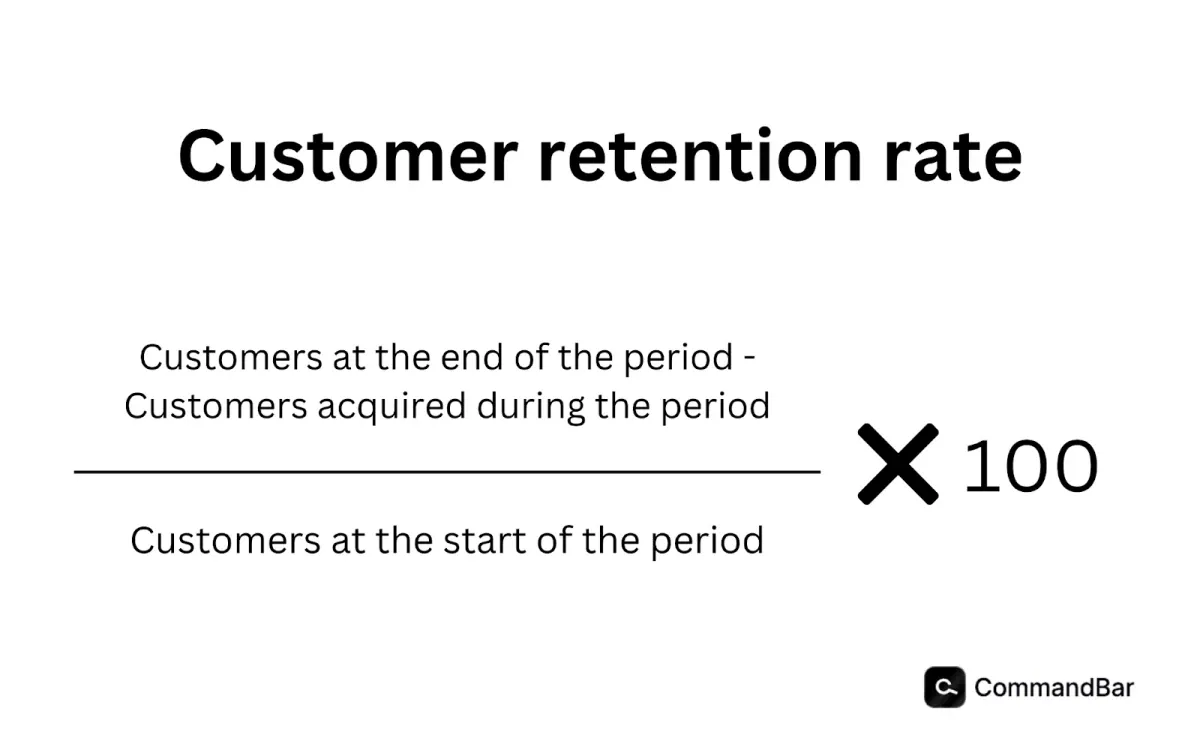
An effective way to measure customer retention is by segments (more on that later). Once you have your numbers, find the right retention solution. An effective solution allows you to gather the necessary data to calculate retention and understand behavior to implement your learnings.
Unfortunately, companies often get the “action” part wrong.
It’s like that store where the employees in the checkout line ask every single time if you want the store credit card offer while you’re just trying to buy your groceries and be on your way. The request is getting old, and the experience isn’t comfortable for you.
You can’t make someone continue to use your app by simultaneously slapping up annoying popups and bombarding users with all your features. Or worse, making it almost impossible to unsubscribe (nice try, but playing hide-and-seek isn’t doing anyone any favors).
Customers who are annoyed will want to run away forever, and you waste energy that could be used for more effective retention methods trying to win them back. Your customer retention strategy shouldn’t be full of forced and intrusive experiences.
Instead, you should create a personalized experience that users love.
It all comes down to the golden rule: Treat each user the way you want to be treated. Give customers what they want, when they want it, and equip them with the features to customize their experience.
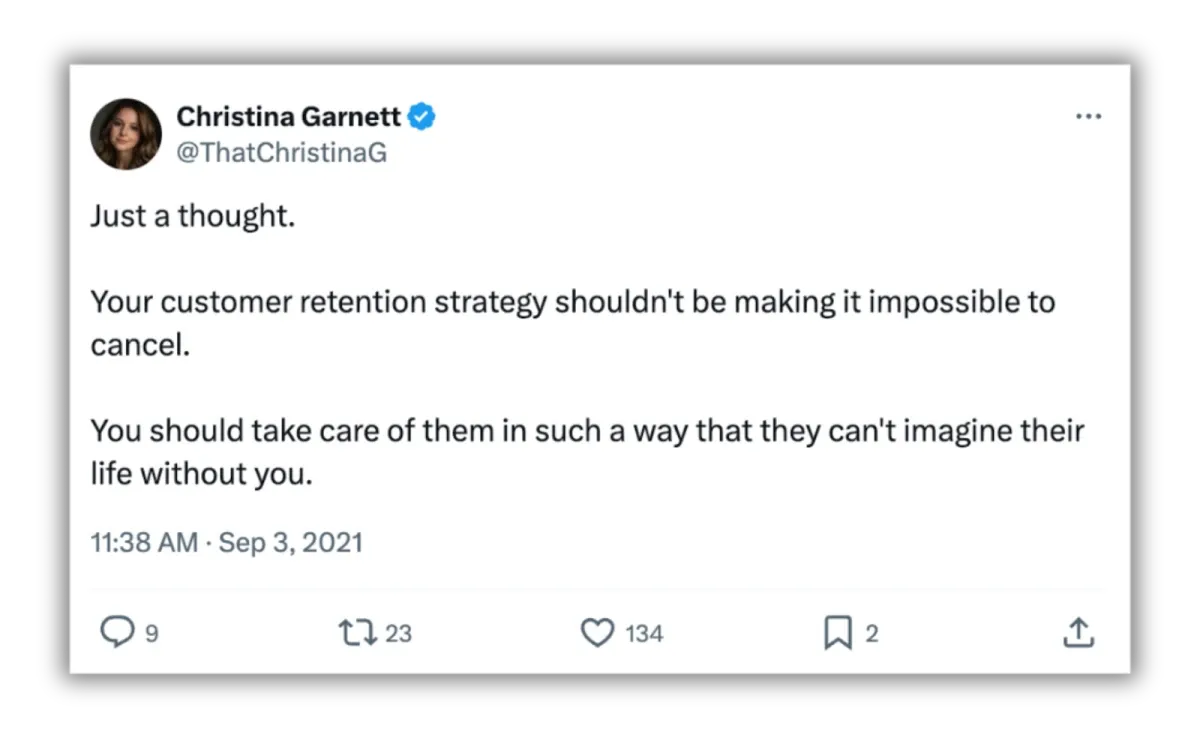
By collecting behavior data through actions and surveys and then delivering what users need, you can increase your user retention rate and scale your SaaS platform.
Understanding which customer retention metrics to track based on your goals
Your customer retention numbers are the end credits, the movie played out. Some users stayed, and more customers than you would like to admit churned.
If you want to dissect user retention, predict where it’s headed, and improve results, it’s important to consider analyzing other metrics that signal where you’re headed.
Customer activation
Customer activation helps us measure how many users experience your app’s core feature. Ideally, it can tie right into a short time-to-value aha moment, which can be achieved by activating users with the exact experience they need.
The formula for customer activation is:
(Number of users that reach activation / Number of new users that signed up) X 100
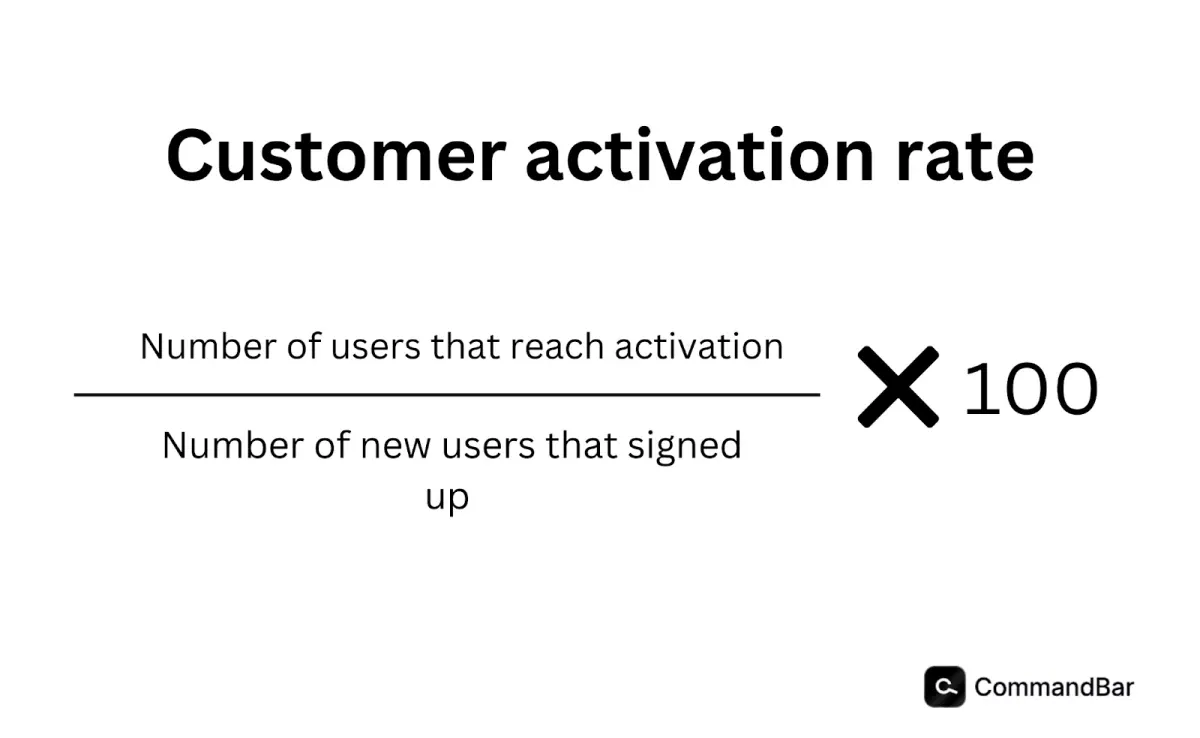
Product adoption
Product adoption measures if your users have accepted and continue using your solution. These users have experienced your value and want to utilize your app consistently.
If you want to increase user retention, this metric can help shed light on your strategy for improvement. Users who adopt your product in the long term find the app valuable and easy to use. The adoption formula can also be applied to feature adoption.
The formula for app adoption is:
(Total active users / Total users) X 100
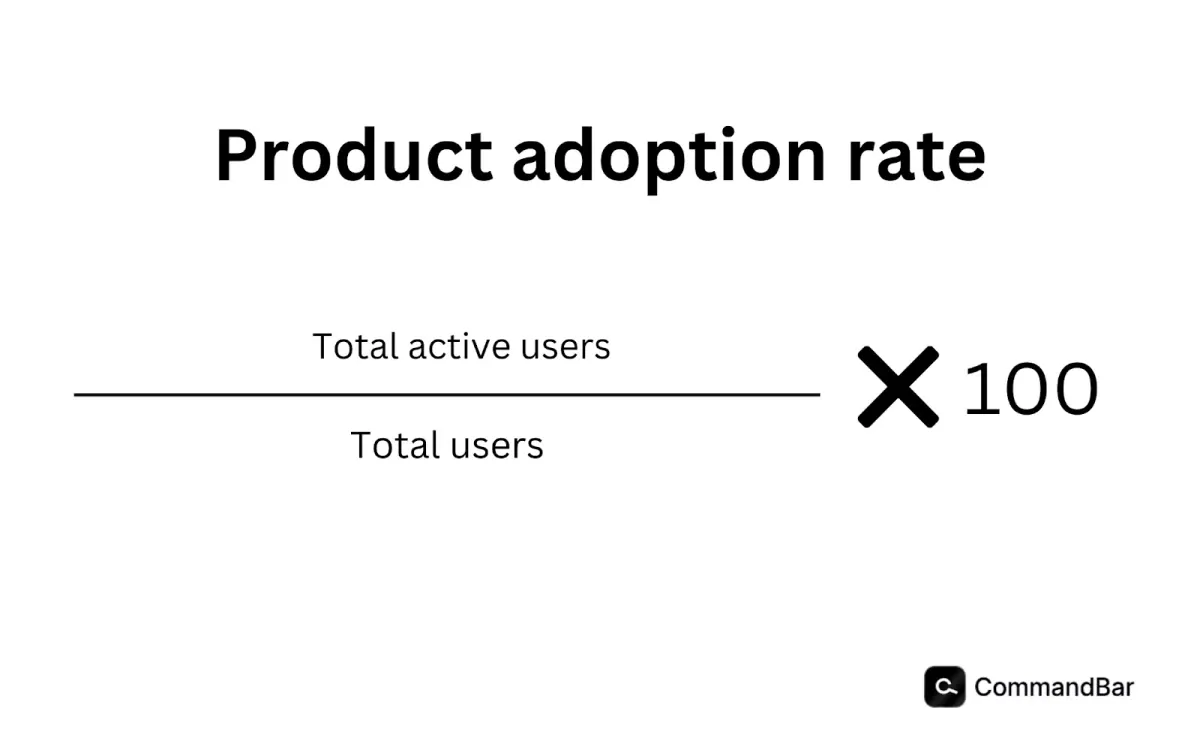
User engagement
Are users interacting with your platform? This could include universal search, using all core features, providing customer feedback, and other signifiers that show long-term interest and satisfaction with your app.
If you can increase engagement, you are more likely to build a better relationship with users, which leads to improved retention.
The formula for user engagement is:
(Engaged users / Total users) X 100

Churn
Churn, the sibling to the customer retention rate, defines who is leaving the app. If you decrease churn, you increase retention. The metrics go hand in hand and help identify why people are staying (retention) and leaving (churn).
The formula for churn is:
(Lost customers / Total customers at the start of the period) X 100
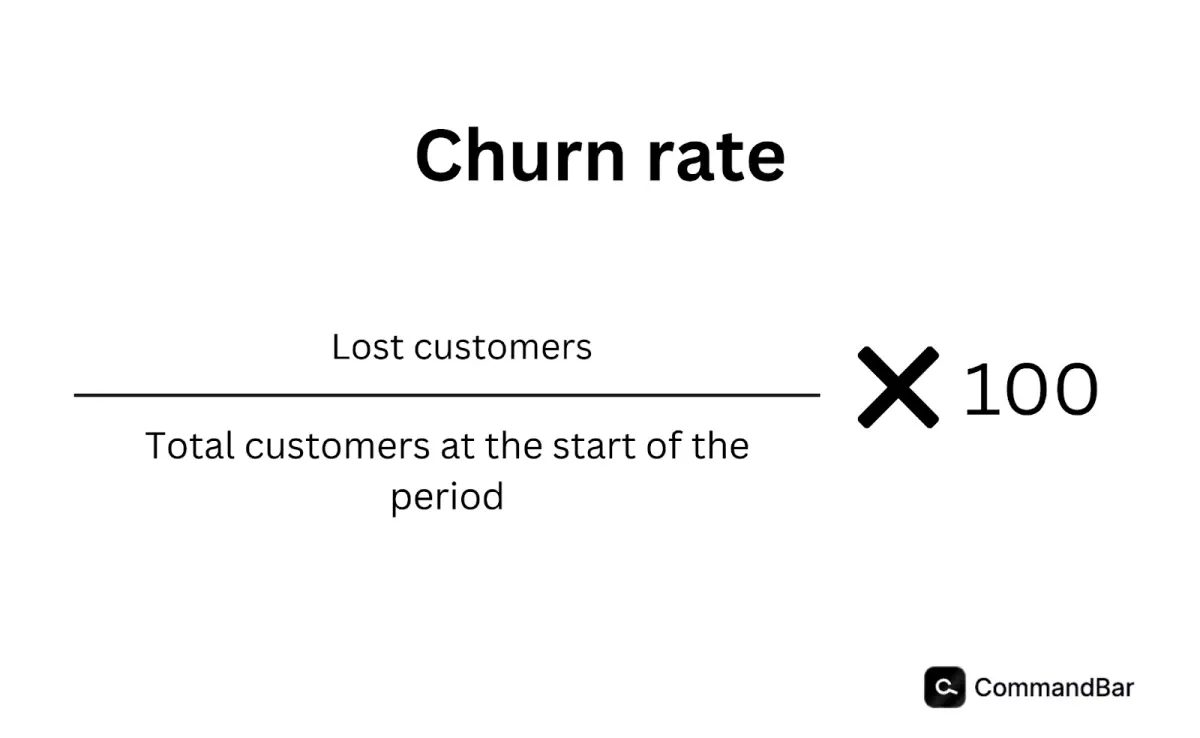
The problem with trying to improve churn is that oftentimes, it’s too late to fix the issue when the customers have already left.
James Evans, CEO of Command AI, states, “When companies do try to unpack the reasons for churn, they do it too late. Sending churned users a survey can give some info, but usually too much time has elapsed between for the user to give clear actionable feedback as to what went wrong.”
That’s why tackling churn and increasing retention through preventive and proactive measures is more effective than playing catch-up.
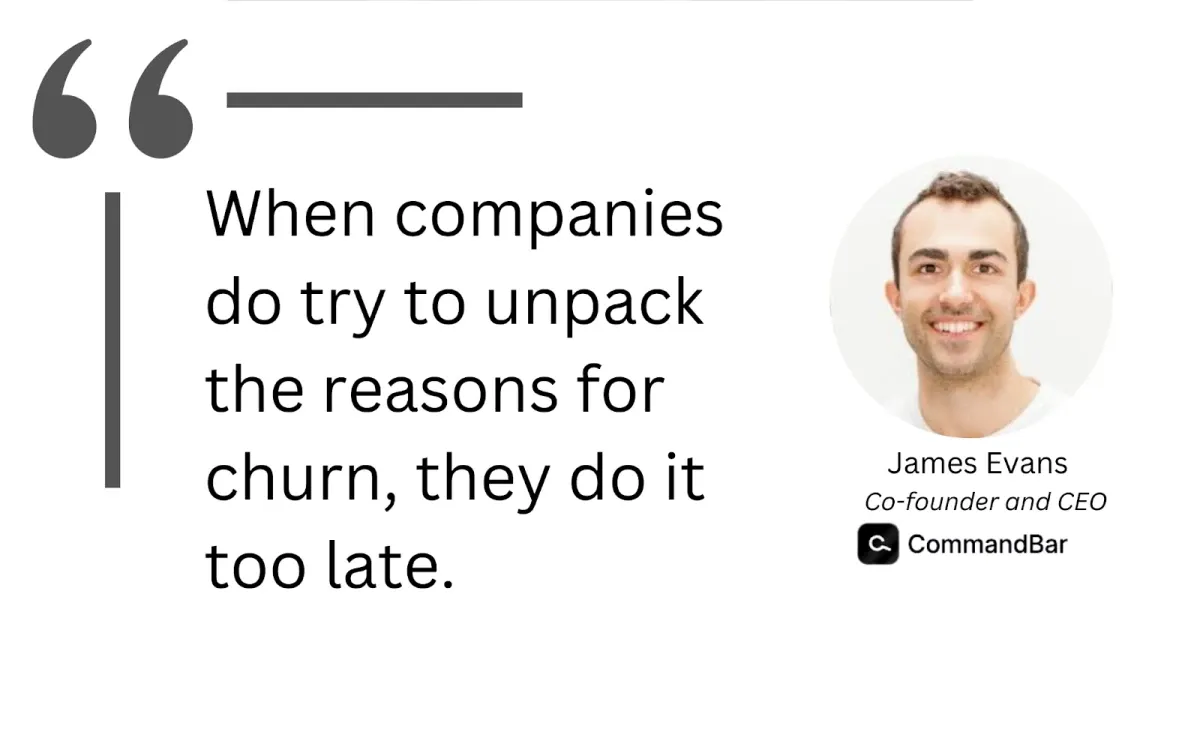
These user experience and retention metrics are essential to understanding customer retention, especially considering that once users churn, they rarely return. Increasing SaaS retention can prevent churn, keep loyal customers happy, and grow sustainably.
Dating ain’t cheap: Customer acquisition and retention
If I had to quickly explain why customer retention is so important and why we should spend more time on it, I can sum it up as this: It’s a lot more expensive to get new customers.

What’s the point in getting new users when you can’t keep them?
In an article published recently on the Command AI blog, I state:
“Customer acquisition is expensive, and if you aren’t obsessing over retention, your business can erode over time. It’s like a household that’s increasing its income while at the same time doubling its expenses. No matter how much money comes in, the household will eventually go bankrupt.”
Customer acquisition is much more complex and expensive than retaining users. Playing a more challenging game and losing out long term makes no sense.
Instead, we create a more sustainable company when we tackle user churn and improve subscriber retention.
Arvid Kahl, host of The Bootstrapped Founder podcast, states, “Customer retention is more important than getting new customers, as churn is the silent killer.”
Companies can shift to investigating the causes of poor retention rates and solving them the right way to grow for the long haul.
I got the numbers. Now what? Analyzing customer retention metrics
Defining the strategy to make sense of your metrics is critical.
For example, when you divide your users into cohorts, you can get much more valuable and specific information. The data you collect and analyze makes sense because each group defines different characteristics.
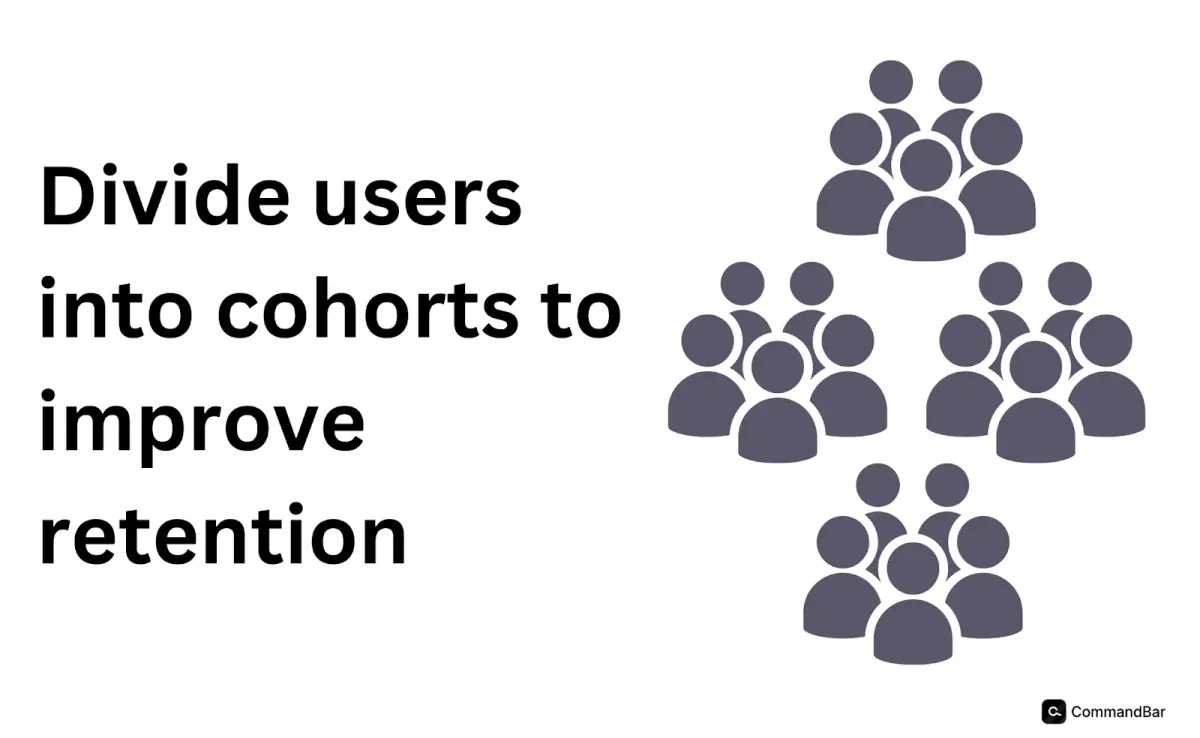
Main types of cohorts
There are two main categories for cohorts that branch off into smaller segments. The first is the acquisition channel. How did the user find you? They may have signed up through a discount and promotion on a site like AppSumo, or perhaps a friend referred them to the app.
These acquisition differences significantly impact how users perceive your app and what they expect. Someone who gets a discount from a promotion likely doesn’t trust the solution as much as they would a word-of-mouth recommendation from a friend.
You can study all these acquisition scenarios and find out how each group responds to your adjustments. It’s likely tied to a quick time-to-value and a segment-specific onboarding experience.
The second category of cohorts is behavioral. Users sign up for your app with a specific need, different learning methods, and unique interests. You can study metrics through these experiences to create more intuitive customer journeys.
Once you’ve prepared the way for organized analyses, you can identify key moments within the user experience that need improvement.
Your retention platform can be used to identify frustration points:
- Are users finishing the product tour?
- Are they using a feature a couple of times and then abandoning it?
- Is the UX writing and design confusing and distracting?
User assistance platforms can help shed light on these segmented user behaviors.
Deadends within the user experience
Finally, a non-obvious solution that brands often overlook is identifying deadends. When users search for a support answer or a particular feature but don’t find it, they are left with an unmet need. This is a valuable signifier for brands.
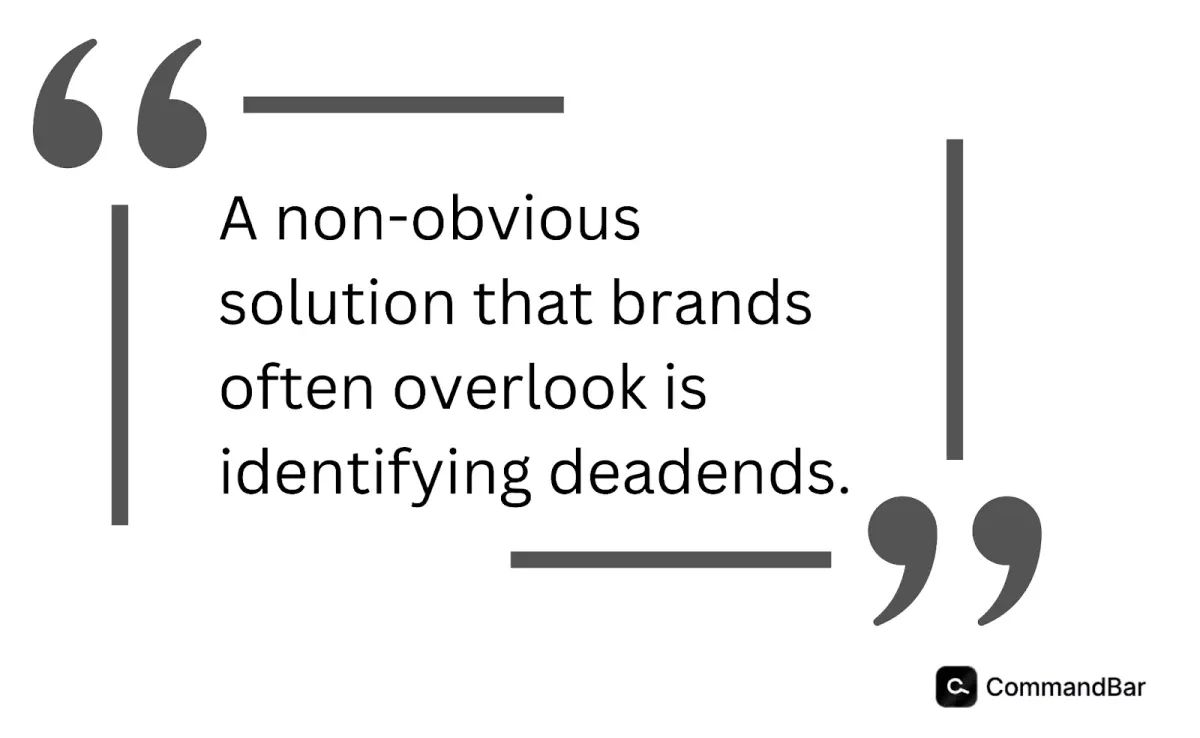
For example, a user searches within your app for an answer to a question, but can’t find the answer.
A good assistance platform will provide additional methods for the user, like a 24/7 chat assistant and an in-app guide. However, there is a moment of friction when the user can’t get immediate value through their chosen method. So, you add the answer to their original question in your resources.
Then, you notice similar deadends hovering around the same topic. Now you know there’s significant friction for that feature. This is a starting point, and you can begin to nail down whether the problem is the onboarding, feature functionality, or other conflicting attributes.
By addressing deadends, you identify trends for new features and improvement. You also provide more value for existing customers, which can increase retention
If customers search for a feature you don’t have, you can capitalize on that popular interest and develop a solution that will make those users happy. By discovering what customers need early on, you not only retain more users but also make them happier without dealing with frustration, which is the poison in the water well.
Turning your data into actionable insights
We’ve learned what metrics are important and how to make sense of that information, and now we can implement data into action. So, let’s fire up this grill.
Deadends, as just mentioned, are one way businesses can use customer information to improve their app. However, you can implement plenty more strategies to keep users on your app.
All of your metrics should inform your strategies to do one thing: You want customers to get the experience they want.
Period.
Anything less will spike your customer churn rate faster than adding shots to your lemonade.
The key is to use your insights to provide a personalized experience.
I'm not talking about a "white glove" experience, which is what people might think of when “personalized experience” is mentioned. For instance, when you walk into Disney World, the employees smile, say hi, and make you feel special. That’s important. But for SaaS, it’s not what keeps users paying for services month after month.
I’m talking about directly relevant experiences crafted for each user. Users not only get a personalized experience, but one that’s also customizable, and they can follow their curiosities through multiple channels and methods.
Here’s where companies get it wrong. They assume everyone wants the same thing, the same way, at the same time.
The traditional user experience looks like this:
- Users sign up and go through the same onboarding process.
- Customers want to try a particular feature but must go through the product tour and sift through it for 5 minutes until they find the feature they’re looking for.
- Throughout the app experience, users are subjected to irrelevant, annoying, and distracting popups trying to introduce every feature under the sun.
- Users feel frustrated, don’t feel like the app is the right fit, and move on to the next one.
Here’s what an intuitive, personalized experience looks like:
- Users sign up for the app and get a quick microsurvey.
- They tell you why they want to use your app.
- Each user receives an onboarding ramp that directly correlates with what they said they needed in the microsurvey.
- Users go through a fun checklist with multiple options, media assets, and complete control.
- Customers get tangible value and solutions to their needs within a few minutes.
- Users reach the aha moment quicker than American tourists buying the first gelato they spot in Italy.
- The users continue to use your app and feel the solution is the perfect fit.
- Over time, you provide “nudges” instead of popups in the product tour, gently showing the user more value, tips, and features so that you retain them for the long term.
- Happy users share your app with everyone they know.
When we incorporate data for personal and unique experiences, we can provide a customer experience. The experience is not to force users to stay but to make them love you so much they don’t want to leave. In turn, new customers join them.
Isn’t that the kind of app experience every leader wants for their platform?
Where to prioritize performance improvement
Hey.
You there...
...the one still thinking about gelatos.
If you’re like me, you want to implement successful insights ASAP. Using a quick guide helps you condense your strategy so you can start today.
Once you adopt a tool to help you collect information, analyze data, and deploy engaging experiences, you can quickly improve customer retention.
Here’s our guide to start today
1. Shorten the time-to-value window. Users should get relevant value immediately. Define your time-to-value now and shorten it by providing exactly what the user needs.
2. Provide personalized experiences. Through microsurveys, multiple experience and support options, and implementing data for a unique experience, find ways to connect with each user personally.
3. Implement intuitive engagement and customer adoption. Add relevant checklists that show the way and don’t force the way. Customers can skip, watch a video instead of reading, and explore your app. Checklists add an element of gamification, which makes it fun for users to try new and exciting things in your app. Invite customers to engage. Don’t scream in their face with popups. The experience should feel natural, familiar, and welcoming.
4. Tighten the feedback loop. Provide ways for users to send in-app feedback. Additionally, through deadend research, strategic surveys, and other methods, ensure you communicate as much as possible with users to identify trends and frustration points and to nurture customer relationships.
Choosing the right platform to measure customer retention and improve
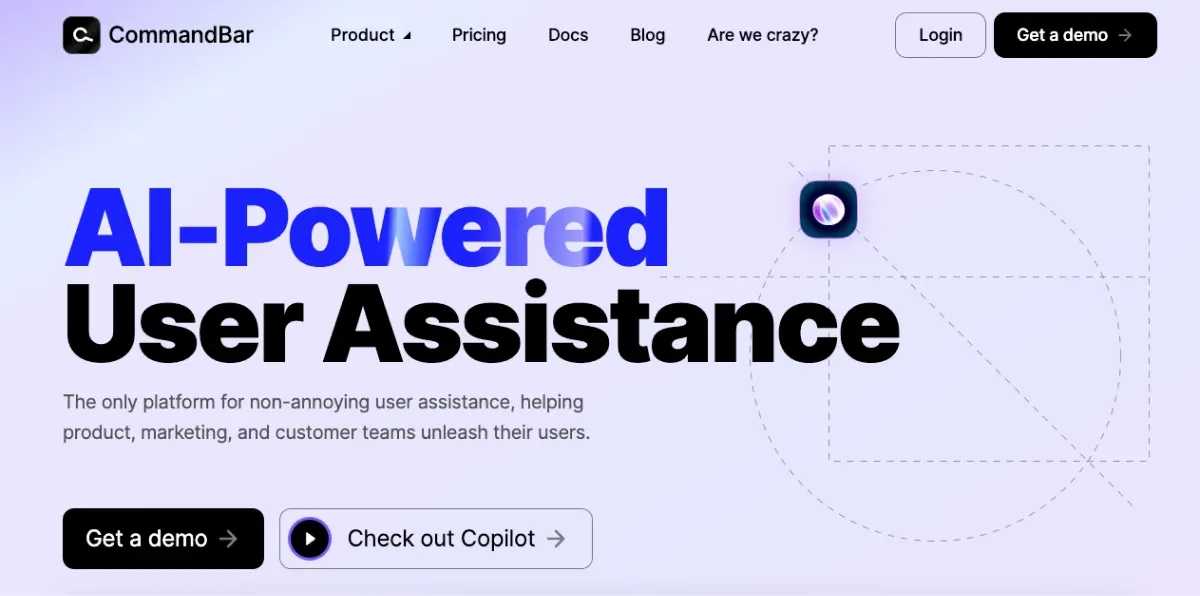
Any company that wants to measure customer retention health and put it into action needs a solution that can implement a successful strategy.
These improvement plans require a way to analyze users so that you can provide a personalized experience—the kind that keeps users wanting to log in more routinely.
Features like Command AI’s surveys allow you to learn the user intent immediately. Then, you can use solutions like nudges instead of popups that gently guide customers to the right place so they can discover value. With an intuitive, customizable, and on-point onboarding journey, you can get customer activation right the first time by immediately showing relevant value. By improving the user experience, you cement a positive customer retention trajectory.
If you want to measure your customer retention rate and implement a plan to increase customer lifetime, choose a solution that lets you intimately know your users and deliver an unmatched, tailored experience.
